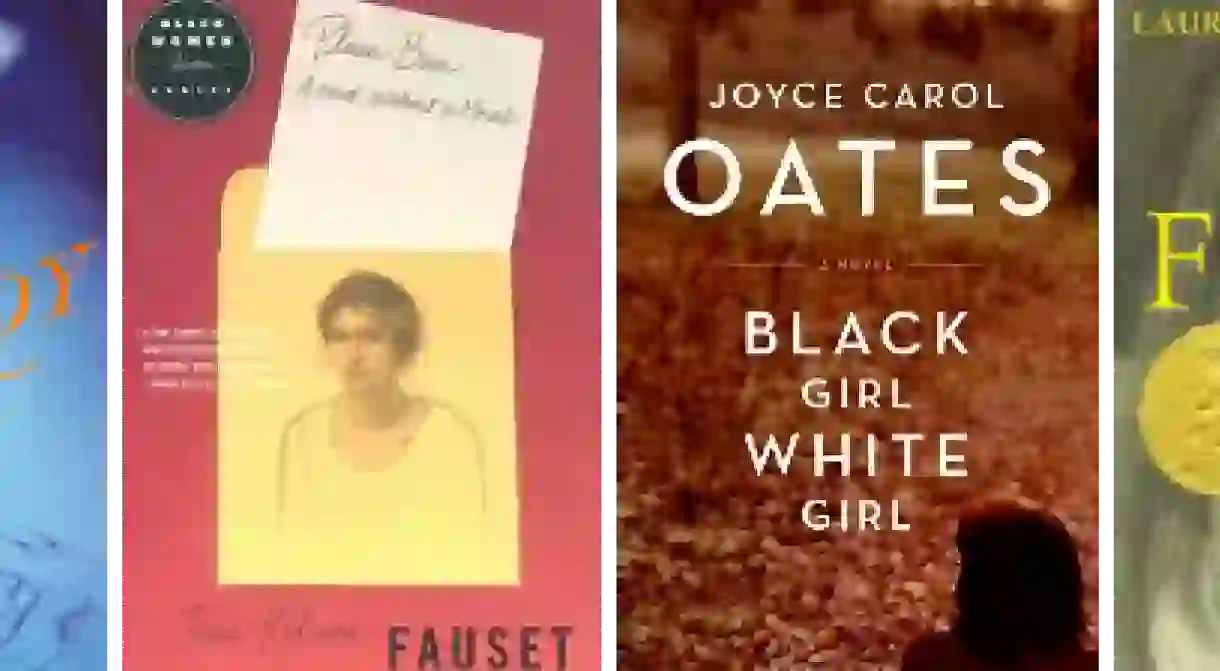The Best Books Set in Philadelphia: Literary Tour of Pennsylvania

A former powerhouse of industry, it is perhaps unsurprising that much of Philadelphia’s arts and culture is not as recognized as other aspects of the city. The Pennsylvanian city, however, has been the inspirational setting to some incredible literature — here are eight of the best books set in Philadelphia.


Third and Indiana by Steve Lopez
Essentially a novel about adult relationships, this book draws together the narrative threads of several characters that are connected to the 14-year old Gabriel Santoro, while living in the dangerous gang-controlled streets of the Badlands section of Philadelphia. Focusing on a real-life intersection of Third Street and Indiana Avenue in the Fairhill area of the city that is known for its prevalence of drug dealers, the novel brought a level of notoriety to the area to a far wider audience and gained the attention of many.

Fever, 1793 by Laurie Halse Andersen
A historical fiction novel that focuses on the Yellow Fever epidemic that rampaged through the city during the 18th century, Andersen’s Fever, 1793 collates a feeling of claustrophobia and fear about the city at the time. Following the protagonist Mattie Cook through the death-infested streets on her quest for profit with her family business, juxtaposed with a need for survival, the book captures the feelings of hope and fear in one. Published in 2000 by Simon & Schuster, the novel won many national and state awards and was even a Publishers Weekly bestseller.

Plum Bun: A Novel Without a Moral by Jesse Redmon Fauset
Written in 1928, Plum Bun: A Novel Without a Moral is a semi-autobiographical novel that follows the story of a young, light skinned African-American woman who can pass as white, but is in search of fulfillment in life whilst battling the racist policies of the age. Employing techniques from traditional genres such as romance and fairy tales, this classic Bildungsroman is widely credited as a massively important contribution to the Harlem Renaissance movement due to its powerful criticism of racism, sexism and capitalism. It shows a stark contrast between the lives of those who could pass freely throughout the city and those who did not have that freedom.

Birdy by William Wharton
Boyhood friends Al and Birdy each have their own unique dreams and desires in life but despite their differences remain close into adult life. With the advent of the Second World War, both are drafted and find their dreams pushed and tested. As Birdy is adversely affected by what he saw whilst fighting, Al tries to reach out to him as he draws into himself and his own dream world. A touching novel that was a Pulitzer Prize finalist in 1980, missing out to Norman Mailer’s The Executioner’s Song, it highlights the horrors of war and the bonds of friendship as well as forcing the reader to view mental illness from a unique, and rarely considered perspective.

Oreo by Fran Ross
Somewhat of a cult classic, this picaresque novel from the sometime comedy writer for Richard Pryor follows the protagonist, Oreo, a girl of mixed heritage with a black mother and Jewish father who divorced when she was two. Now on the hunt for the father she has never known, Oreo must transcend taboos about identity, culture, race and sexuality. This book was well ahead of its time and it was only upon republication in 2000 that it received much greater recognition. Fran Ross herself grew up in Philadelphia and the knowledge and humor she approaches her depiction of the city with are prevalent throughout the novel.

Philadelphia Fire by John Edgar Wideman
Wideman’s Philadelphia Fire was inspired by the 1985 police bombing of a row house owned by an Afrocentric cult known as MOVE which killed 11 people and started a fire that destroyed 60 houses. This novel reels through the racial tension of the city and parallels urban decay with spiritual decay. Raising questions of police oppression and state control, the book looks at the social and political effects of this devastating event on several stratospheres of life within the city. Examinations of race and class create a poignant story about ‘the city of brotherly love’ as a city divided.

Black Girl/White Girl by Joyce Carol Oates
A study of race and how people interact with the subject, Black Girl/White Girl ostensibly focuses on Gena Hewitt-Meade trying to establish the cause of death of her college roommate fifteen years after the event. Thus in turn leads her to question her own identity and morality and sets up a double portrait of race and civil rights in post-Vietnam America. Playing with the concepts of social obligation in a morally gray world, this novel doesn’t just confront racial tensions but also white, middle-class guilt and the America of today.

In Her Shoes by Jennifer Weiner
A story of two sisters who have very little in common except a shared shoe size, the story strolls through a series of events that bring them to realize they have more in common than just DNA. Shared shoes and shared boyfriends cause drama but shared childhood traumas and adult life triumphs brings this narrative of sibling rivalry towards a hypothesis of what family really means even if there is tension within that dynamic. Later made into a 2005 film starring Cameron Diaz and Toni Collette, the book may well hold more emotional sway than its cinematic counterpart.













